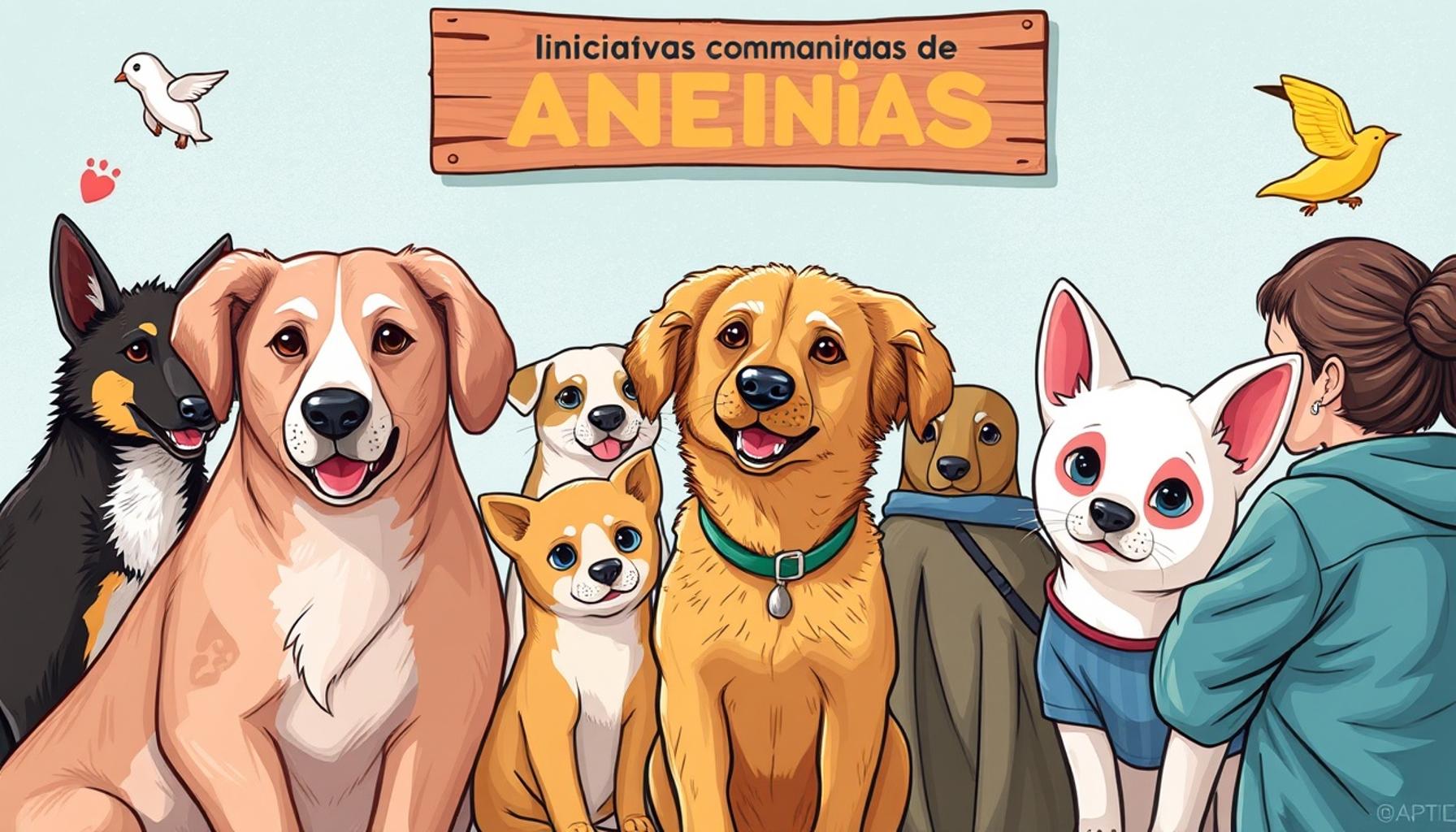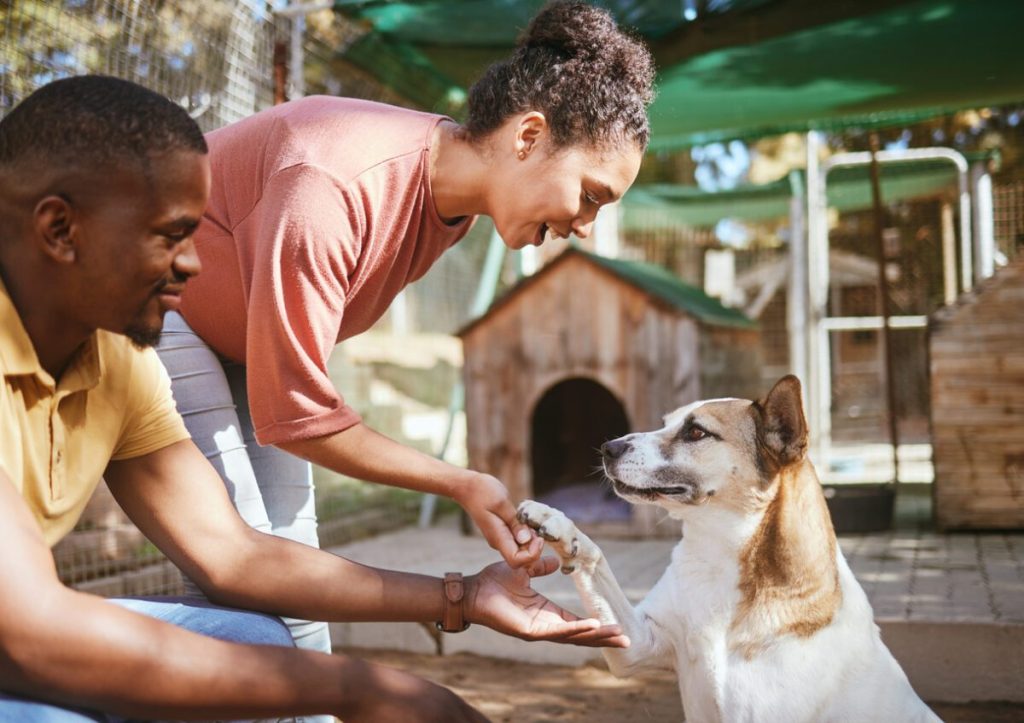Community Initiatives to Promote Animal Adoption from Shelters

Empowering Communities Through Animal Adoption
Across the United States, countless animals in shelters await a forever home. Every year, millions of pets are surrendered, leading to an urgent need for effective community initiatives aimed at promoting animal adoption. Local organizations and passionate individuals are taking steps to bridge the gap between these vulnerable animals and loving families. This collective effort not only saves lives but enriches the lives of those involved, creating a ripple effect of compassion and care within communities.
Various community-driven programs have emerged, showcasing innovative ideas and collaborative efforts that spotlight the importance of animal adoption. Here are some notable examples:
- Adoption Events: Health fairs, local festivals, and farmers’ markets often host pet adoption events. These gatherings help create a lively environment where potential adopters can meet shelter animals in a relaxed setting, fostering a personal connection. For instance, events like the “Clear the Shelters” initiative, held annually across the nation, have successfully paired thousands of animals with families, making a significant impact on local shelter populations.
- Awareness Campaigns: Social media campaigns and traditional advertising have become pivotal in raising awareness about the benefits of adopting from shelters. Platforms like Instagram and Facebook are inundated with heartwarming rescue stories, showcasing the personalities of shelter pets and combating stereotypes associated with these animals. Campaigns such as “Adopt Don’t Shop” not only encourage adoption but also educate potential pet owners on the responsibilities of pet ownership, increasing the likelihood of successful placements.
- Partnerships: Collaborations between schools, businesses, and shelters have become increasingly common, fostering a culture of education on animal welfare. Programs in local schools, for example, often feature visits from shelter representatives and animals, teaching students about empathy, responsibility, and the importance of adoption. Local businesses may also sponsor adoption fees or offer discounts to new pet owners, enhancing community commitment to animal rescue.
These initiatives not only help animals find homes but also strengthen community bonds. By reducing the stigma around shelter pets, communities can inspire more residents to consider adoption and support their local shelters. As communities come together for these causes, they build networks of support that extend to pet care education, training, and resources for new adopters, which are invaluable in ensuring the success of adoptions.
The interconnection between community well-being and animal adoption is profound. When families adopt pets from shelters, they not only gain loyal companions but also contribute to a decreased population of homeless animals, thus improving local animal control issues. Furthermore, the act of adopting fosters compassion and a sense of responsibility among community members, enhancing overall societal values.
As we delve deeper into the impact of these community efforts, it becomes evident how they shape the landscape of animal adoption, creating lasting change in the lives of both pets and people alike. The journey toward a more compassionate society starts at the local level, and through dedicated engagement and education, communities across the U.S. are leading the charge to make animal adoption a celebrated and integral part of life.

DISCOVER MORE: Click here to learn about eco-friendly pet accessories
Innovative Approaches to Animal Rescue
In recent years, communities across the United States have recognized the pressing need for initiatives aimed at promoting animal adoption from shelters. With over 6.5 million companion animals entering U.S. animal shelters each year, the collective responsibility to find homes for these displaced creatures has become paramount. Community-driven efforts not only facilitate the adoption process but also illuminate the myriad of benefits that come from welcoming a shelter pet into one’s family.
One of the most effective strategies has been the rise of collaborative adoption events. These events, often held in conjunction with local fairs, festivals, or pet expos, allow potential adopters to engage directly with animals in a vibrant environment. Unlike traditional shelter visits, these interactions foster a more relaxed atmosphere, where families can meet various pets, ask questions, and, most importantly, form connections without the time pressure often felt in a shelter setting. For example, events like the annual “Dog Day at the Park” not only showcase adoptable animals but also feature activities that educate attendees on pet care and responsible ownership, creating vibrant opportunities for community engagement.
Leveraging Social Media for Greater Reach
In today’s digital age, social media has evolved into a powerful tool for animal rescues and shelters. Local organizations take advantage of platforms like Facebook, Instagram, and Twitter to spread awareness about available animals, promote upcoming adoption events, and share heartwarming success stories. Campaigns such as “#AdoptDontShop” have gained traction, encouraging potential adopters to consider shelter pets over purchasing from breeders or pet stores. This narrative shift not only normalizes adoption but actively combats common misconceptions surrounding shelter animals, such as behavioral issues or health problems.
Educational Partnerships for Long-Term Impact
Partnerships between local businesses, schools, and animal shelters have become a cornerstone of many community initiatives. For instance, schools often incorporate animal education programs where shelter representatives visit classrooms with adoptable pets. This hands-on approach teaches children about empathy, compassion, and responsibility, instilling values that can lead to informed future pet ownership. Additionally, businesses can participate by offering incentives for new adopters, such as discounts on pet food or grooming services. These partnerships create a network of support surrounding adoption, ensuring that both animals and their new families have access to necessary resources.
The combination of engaging events, social media outreach, and educational partnerships highlights the creativity and commitment of communities determined to make a difference. By actively participating in these initiatives, residents not only contribute to reducing the number of homeless animals but also cultivate a culture of compassion that resonates throughout the community. The collaboration between organizations and individuals stretching beyond the confines of the shelter is crucial in forming lasting connections that transform lives on both sides of the leash.
| Advantage | Impact |
|---|---|
| Community Outreach Programs | Engaging locals to promote the importance of adopting shelter animals and reducing the stigma surrounding them. |
| Education and Awareness Campaigns | Informing the public about the benefits of animal adoption, including lifelong companionship and saving lives. |
| Partnerships with Local Businesses | Creating incentives, such as discounts for adopters, thus benefiting both the shelter and local economy. |
| Volunteer Programs | Encouraging local citizens to become involved, further fostering a sense of community and responsibility towards animals. |
Community initiatives to promote animal adoption play a vital role in shaping public perceptions and increasing adoption rates from shelters. Engaging community members through outreach programs not only educates them on the importance of adopting shelter animals but also helps in dispelling the myths and stigma surrounding them. Furthermore, education and awareness campaigns can highlight the profound benefits of a pet, such as providing unconditional love and companionship while contributing to the decrease in the overall shelter population.Establishing partnerships with local businesses enhances these initiatives by incentivizing adoption through promotions or discounts, which can create a supportive ecosystem for both the community and the shelters involved. Ultimately, by fostering volunteer programs, individuals can find fulfillment in playing an active role while simultaneously enriching their community’s compassion towards homeless animals. These collective efforts can lead to a healthier society where animal welfare is prioritized, reflecting a vital sense of empathy and solidarity within communities.
LEARN MORE: Click here to discover the importance of nutrition for your pets
Engaging the Community: Volunteer Programs and Foster Care
Recognizing the need for sustained engagement, many communities have begun to implement innovative volunteer programs and foster care systems that play a pivotal role in facilitating animal adoption. These initiatives not only help to reduce the immediate burden on shelters but also encourage deeper community involvement in the welfare of animals in need.
The Power of Volunteer Programs
Volunteering at local shelters offers a hands-on approach for community members to connect with animals while acquiring invaluable skills. Shelters across cities such as San Francisco and Chicago have reported that volunteers contribute significantly to the day-to-day operations, helping with tasks that range from cleaning and feeding to conducting dog training sessions and socializing cats. Many shelters have adopted structured volunteer programs that include training and orientation sessions, clarifying expectations and responsibilities for new volunteers.
Moreover, community volunteerism has expanded through initiatives like “Pawsitive Effects,” where volunteers take shelter dogs on daily outings, providing much-needed exercise and socialization. This exposure not only boosts the animals’ chances of adoption by improving their behavior but also increases community awareness of the shelter and its needs. As a result, volunteers become advocates for shelter pets, often sharing heartfelt stories online and further amplifying the outreach efforts of shelters.
Fostering as a Model for Sustainable Adoption
The foster care program has emerged as an essential strategy for supporting shelter pets until they find permanent homes. Beyond reducing overcrowding, fostering allows animals to experience a home environment, which aids in their behavioral adjustment. It’s reported that animals who have spent time in foster care often exhibit greater socialization skills and reduced anxiety upon entering a new, permanent home.
Organizations like the “Foster Paws Program” have made it easier for community members to become involved in pet fostering. Filters in participating shelters identify specific needs, such as families willing to foster puppies or senior pets. These programs offer supplies, training, and communication support for foster families to ensure that they feel equipped and supported in their temporary roles.
Advocating for Change: Local Policy and Advocacy Groups
In addition to volunteer and fostering opportunities, advocacy groups play a crucial role in enhancing animal adoption initiatives. Community-led campaigns often target local policymakers to ensure legislation favors adoption and the humane treatment of animals. Groups have successfully lobbied for ordinances mandating spaying and neutering, which directly reduces the number of unwanted animals entering shelters.
Moreover, grassroots organizations are mobilizing to collaborate with municipal shelters on “Adoption Saturdays,” featuring waived fees or reduced adoption costs to incentivize more families to adopt. Through such outreach, these efforts have demonstrably resulted in increased adoptions and heightened community interest in responsible pet ownership.
Through a combination of volunteerism, fostering initiatives, and proactive advocacy, communities are creating an integrated, supportive ecosystem that enhances animal adoption rates. These collective actions not only promise a better future for shelter animals but also foster a spirit of compassion, empathy, and responsibility that reinforces the bonds within the community. As these initiatives evolve and flourish, they serve as inspiring models for towns and cities nationwide, proving that together, communities can significantly impact the lives of animals in need.
DISCOVER MORE: Click here to learn effective training techniques
Conclusion: A Collective Effort Towards Animal Welfare
The movement towards enhancing animal adoption from shelters reflects a profound shift in community values and responsibilities. As demonstrated by various community initiatives, the collaboration among volunteers, foster families, and advocacy groups creates a robust, interconnected framework that addresses the challenges faced by animal shelters. By engaging local residents in hands-on roles, communities not only alleviate the immediate demands of shelters but also foster a greater sense of ownership and compassion towards homeless animals.
Moreover, the success of innovative programs like “Pawsitive Effects” and “Adoption Saturdays” underscores the importance of targeted interventions that entice families to adopt and create sustainable homes for shelter pets. These grassroots efforts not only improve the lives of countless animals but also lead to increased awareness about responsible pet ownership and the significance of supporting local shelters.
As communities continue to develop effective strategies for animal adoption, it becomes evident that proactive measures and a united front can indeed drive change. The future of shelter animals hinges on the collective commitment of individuals and organizations dedicated to making a difference. Each adopted pet stands as a testament to the power of community—the essence of compassion, care, and responsibility that binds us all.
It is an exciting time to be involved in the realm of animal welfare. Opportunities abound for those willing to lend a hand, whether through volunteering, fostering, or advocating for change. As our communities innovate and adapt, we can continue to inspire national movements that champion the cause of shelter animals, ensuring that more of them find loving homes.


